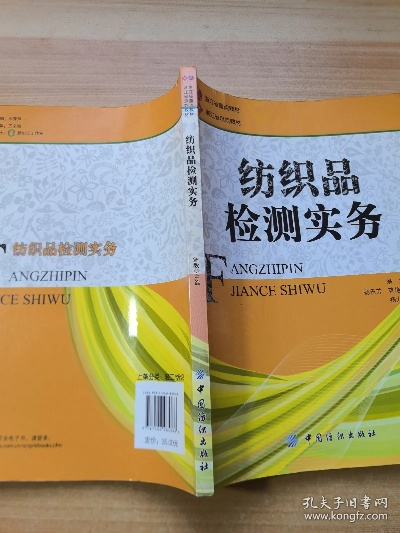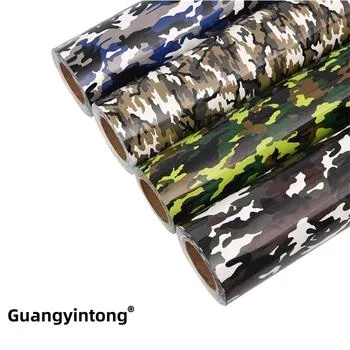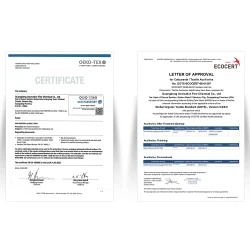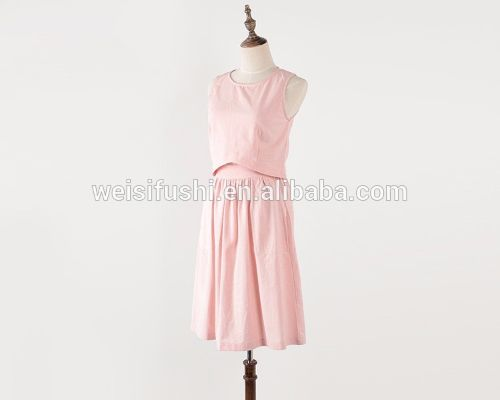纺织品贸易验货方法与实践指南
: Inspection Methods and Practice Guide for Textile Trade,Abstract: This paper presents a comprehensive overview of the inspection methods used in the textile trade, detailing both theoretical and practical aspects. It begins by outlining the importance of quality control in the international market, highlighting the significance of proper inspection processes to ensure product integrity and customer satisfaction. The paper then discusses the various types of inspection methods commonly employed in the textile industry, including visual examination, mechanical testing, and laboratory analysis. Furthermore, it explores the challenges faced by inspectors, such as the variability of materials and the complexities of cross-border operations, and offers insights on how to address them effectively. Additionally, the guide provides practical tips for inspectors, including best practices for data collection, documentation, and reporting. By offering these guidelines, the text aims to provide a valuable resource for both practitioners and educators in the field of textile trade inspection.
Introduction: In the global textile market, quality assurance and inspection are paramount to ensure that products meet standards and customer expectations. This guide aims to provide a comprehensive overview of essential methods for conducting textile trade inspections. We shall discuss various tools and techniques used during the inspection process, including sample analysis, visual assessment, and testing methods. Additionally, we'll explore real-world examples of successful trade inspections and highlight best practices in order to improve efficiency and accuracy.

Table 1: Trade Inspection Tools and Techniques | Checklist Item | Description | | --------------- | ----------- | | Sampling Procedures | The selection of representative samples for testing. | | Quality Control Standards | Reference standards for product acceptance or rejection. | | Visual Inspection | A thorough examination of physical attributes such as color, thickness, and pattern. | | Laboratory Testing | Analysis of chemical, physical, and mechanical properties of materials. | | Dimensional Verification | Compliance with specified dimensions and measurements. | | Packaging and Labeling | Assessment of packaging materials and labeling information. |
Case Study: Consider a scenario where a manufacturer is exporting a line of high-end woven shirts from China to North America. To ensure their products meet U.S. import standards, they need to perform a thorough trade inspection. They use a combination of sampling procedures, laboratory tests, visual inspection, and dimension verification.
Sample Analysis: The company selects a random sample of 50 pieces from each shipment for detailed testing to determine if the fabric meets the required thickness and strength standards.
Visual Inspection: The inspectors examine each shirt item under magnifying glasses for any signs of wear, tear, or damage. They also verify that the labels accurately reflect the colors, patterns, and sizes of the shirts.
Laboratory Testing: Using specialized equipment, the company conducts tests on the sampled fabric to measure its elongation, tear strength, and water absorption rate according to international standards.
Dimension Verification: To confirm that the shirts are consistent in size, the manufacturer uses caliper measurements on each piece and verifies these against the manufacturer's specifications.
Results: Based on the inspection, all samples passed both visual and laboratory tests. However, some shirts were found to be out of dimensional range due to improper packing, leading to a minor rework issue. Despite these issues, the company was able to resolve them through improved packaging and communication with their customers.
Conclusion: Trade inspections are crucial for ensuring the quality and safety of textile products entering new markets. By utilizing a variety of inspection tools and techniques, manufacturers can minimize risks and maximize customer satisfaction. It’s important to maintain a proactive attitude towards quality control throughout the entire supply chain, from production to delivery. With the right approach and tools, trade inspections can lead to increased efficiency, cost savings, and enhanced brand recognition.
在纺织品贸易中,验货环节至关重要,它直接关系到产品的质量和客户的满意度,本文将详细介绍纺织品贸验货的方法和案例分析,帮助大家更好地掌握这一环节。
验货流程
准备阶段
在验货前,需要做好充分的准备工作,确定验货的目的和范围,明确需要检查的产品种类和数量,准备好必要的工具和设备,如称重设备、尺子、尺码表等,对验货人员进行培训,确保他们熟悉验货标准和流程。
外观检查
外观检查是验货的第一步,主要检查产品的外观质量,检查产品是否有破损、污渍、瑕疵等瑕疵情况,检查产品尺寸是否符合标准,包括长度、宽度、厚度等,检查产品颜色、图案、标志等是否与样品一致。
质地检查
质地检查主要关注产品的材质和工艺,检查产品的面料材质是否符合标准,如纤维含量、手感等,检查产品的工艺流程是否规范,如缝制、织造等,还可以通过触摸产品来感受其质地和手感。

性能测试
性能测试是验货的重要环节,主要测试产品的性能指标,根据产品种类和标准,进行各项性能测试,如耐热性、耐磨性、抗皱性等,还可以进行功能测试,如拉链、纽扣等配件的功能是否正常。
记录与报告
在验货过程中,需要做好详细的记录和报告,记录包括产品信息、外观质量、质地检查、性能测试等结果,报告应包括验货总结、问题清单和建议措施等内容,还可以根据实际情况制定详细的验货报告模板。
案例分析
以某纺织品贸易公司为例,介绍其验货方法和案例分析,该公司主要经营各种纺织品,包括棉质衣物、丝绸制品等,在验货过程中,采取了以下措施和方法:
准备工作充分
该公司在进行验货前,进行了充分的准备工作,明确了验货的目的和范围,明确了需要检查的产品种类和数量,对验货人员进行培训,确保他们熟悉验货标准和流程,还准备了必要的工具和设备,如称重设备、尺子等。
细致检查产品外观和质量
在外观检查中,该公司对每一件产品都进行了细致的检查,检查了产品的颜色、图案、标志等是否与样品一致,检查了产品的破损、污渍、瑕疵等情况,还通过触摸产品来感受其质地和手感,确保产品质量符合标准。
全面测试产品性能指标
在性能测试中,该公司对各种纺织品进行了全面的测试,根据产品种类和标准,进行了各项性能测试,如耐热性测试、耐磨性测试等,还进行了功能测试,如拉链是否正常工作等,通过全面测试,确保了产品的性能指标符合标准。
总结与建议
通过本文的介绍和分析,我们可以了解到纺织品贸验货的方法和案例分析,在验货过程中,需要做好准备工作、细致检查产品外观和质量、全面测试产品性能指标等措施和方法,还需要根据实际情况制定详细的验货报告模板,对于该公司的经验做法和建议措施如下:
- 准备工作要充分:在进行验货前,要明确目的和范围,准备好必要的工具和设备,对验货人员进行培训,确保他们熟悉验货标准和流程。
- 细致检查产品外观和质量:在外观检查中要细致认真,确保产品质量符合标准,同时还可以通过触摸产品来感受其质地和手感,对于质地检查可以进一步关注材质和工艺等方面。
- 全面测试产品性能指标:在性能测试中要全面细致地进行测试,确保产品的各项性能指标符合标准,同时还可以根据实际情况制定详细的报告模板和建议措施,对于建议措施可以包括加强质量控制、提高客户满意度等方面。
纺织品贸验货是一项重要的工作环节,需要认真对待和执行,通过本文的介绍和分析,希望大家能够更好地掌握纺织品贸验货的方法和案例分析,提高产品质量和客户满意度。
Articles related to the knowledge points of this article:
The Fabric of Success:A Case Study on Fujian Tianyuan Textiles
The Pinnacle of Fashion at Nantong A Closer Look at Nanton Power-Up Textiles
Exploring the Legacy of Textiles in Shaoxing,Chinas Ancient Capital
A Comprehensive Guide to Textile Wooden Box Rating Standards
Shanghai Korea Textiles Center:The Hub of Global Trade and Innovation



